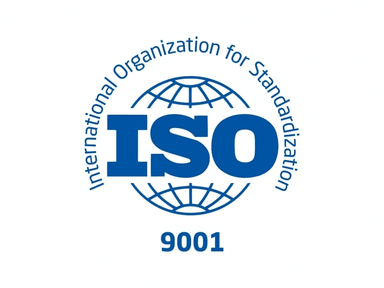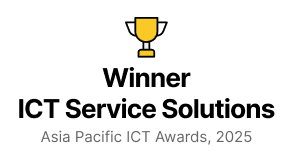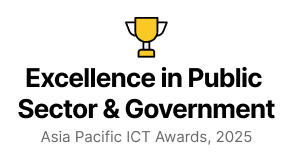Shachini Arampath
2025-07-18
Introduction
In today's software development landscape, delivering high-quality software at speed is more than a goal; it's a necessity. Traditional testing methods often fail to meet the demands of modern Agile and DevOps practices. That’s where Shift-Left and Shift-Right testing strategies come into play, transforming how teams approach software quality across the entire development lifecycle.
Understanding Shift-Oriented Testing
Shift-Left Testing is all about starting quality checks earlier in the development process, closer to the planning, designing, and coding stages. Meanwhile, Shift-Right Testing focuses on observing how software behaves in real-world conditions after it’s released. It’s about learning, adapting, and improving based on real usage and feedback.
These strategies aren’t opposites; they complement each other. Together, they form a holistic testing approach that promotes continuous improvement and better outcomes.
Shift-Left: Building Quality from the Start
The Shift-Left mindset helps teams catch bugs early, reducing rework and speeding up delivery. By integrating testing activities into early stages, teams can improve both the process and the product from the get-go.
Key Techniques and Features:
-
Requirement Review and Validation Ensuring that user stories and features are clear, complete, and testable before development begins. This avoids ambiguity and reduces back-and-forth later.
-
Early Test Design and Planning Creating test scenarios and acceptance criteria before a single line of code is written. This aligns everyone around what “done” means and helps identify tricky edge cases early on.
-
Unit Testing Developers write small tests for individual components or functions to catch bugs right where they start, at the code level.
-
Static Code Analysis Automated tools scan the code for common bugs, security risks, and maintainability issues. It’s like having a second pair of eyes on every commit.
-
Manual Exploratory Testing (Early Stages) Testers interact with early builds to uncover unexpected behavior, logical flaws, or UX hiccups that automation might miss.
-
Usability and Accessibility Validation Manual checks of the interface to make sure the product is easy to use and accessible to all users, including those with disabilities.
-
Automated Regression Testing Running automated tests regularly in the CI/CD pipeline to make sure new changes don’t break existing functionality.
By catching issues early, Shift-Left reduces cost, shortens feedback loops, and creates a stronger foundation for quality.
Shift-Right: Enhancing Resilience and Learning Post-Deployment
Shift-Right strategies begin after software deployment, ensuring the application performs effectively in real-world conditions. This approach emphasizes learning from actual user behavior and rapidly responding to any issues.
Key Techniques and Features:
-
Real-Time Monitoring and Observability Tools like APMs (Application Performance Monitoring tools) and logging systems keep an eye on performance, errors, and usage patterns in production. They alert teams to issues as they happen, before users start complaining.
-
Error Tracking and Incident Management When things break, you need to know fast. Tools automatically capture crashes and errors with helpful context, so teams can fix bugs quickly and prioritize the most impactful ones.
-
Canary Releases and Feature Toggles Instead of launching new features to everyone at once, a canary release lets you roll them out to a small group first. If all goes well, you expand. If not, you roll back with minimal impact. Feature toggles give you the power to turn features on or off instantly—no redeploy needed.
-
A/B Testing Release two different versions of a feature and see which one users like more. This data-driven approach helps teams improve UX and make better product decisions.
-
Chaos Engineering Intentionally introduce failure—like simulating server outages or slowdowns—to test how well the system recovers. It builds confidence in your system’s resilience.
-
Customer Feedback Integration Listening to users through surveys, support tickets, or in-app feedback helps teams understand pain points and prioritize the right improvements.
-
Manual User Validation (in Staging/Production) Before rolling out a feature to everyone, testers manually check it in staging or production-like environments. It’s a final hands-on validation to make sure everything works in the real world.
-
Performance and Load Testing Simulate real user traffic to see how your app performs under pressure. This helps teams find performance bottlenecks before users do.
-
Manual Smoke and Sanity Testing After a deployment, testers run a quick check of critical features—like login, search, or checkout—to make sure everything still works. It’s a simple but effective way to catch high-impact issues right away. Shift-Right provides the feedback needed to learn from live usage and continuously improve the software experience.
The Power of a Unified Testing Strategy
Bringing Shift-Left and Shift-Right together creates a continuous quality loop. Early testing prevents issues from reaching production, while late-stage validation and monitoring help teams respond to real-world challenges quickly.
Benefits of Combining Both:
- Fewer bugs reach production
- Faster detection and resolution of issues
- Continuous feedback throughout the development lifecycle
- Better collaboration across development, QA, and operations
- A more reliable, user-focused product
Conclusion
Shift-Left and Shift-Right testing strategies are critical for modern software development, essential to maintaining high standards of quality in today's fast-paced environment. By embedding quality assurance early and continuously learning from real-world usage, teams can release software faster, respond quickly to feedback, and build applications that users trust. The future of software testing involves seamlessly integrating these practices to cultivate a culture of continuous improvement and quality at every stage.






